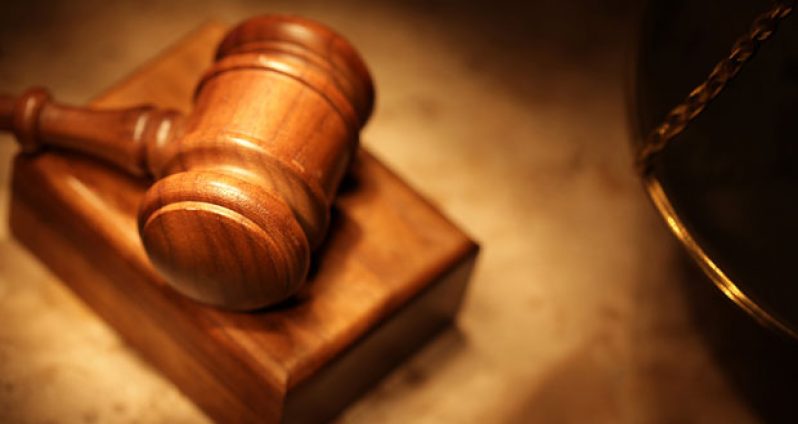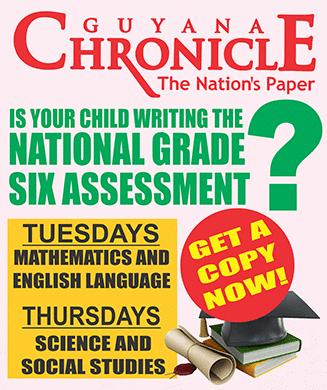IN 1960 the Federal Supreme Court in its criminal appellate jurisdiction allowed the appeal of murder accused Baldeo Dihal on the ground that the trial judge’s misdirection on the law, as it related to the facts was likely to cause confusion in the jury’s mind.
The accused who was found guilty by the jury was sentenced to death but he appealed.
The Federal Appellate Court constituted by Justices Rennie, Archer and Wylie allowed the appeal and set aside the conviction and death sentence, but ordered a new trial, in the interest of justice.
The Appellate Court held that on the trial of a person charged with murder the judge should relate the law to the facts in the case.
It was pointed out that when dealing with the question of provocation, mention should not be made of cooling time if the evidence clearly shows that no time elapsed between the provocation and the retaliation and more so, where any such mention of cooling time may cause confusion in the mind of the jury.
It is the duty of the judge, in his summing up, to deal adequately with the evidence relating to self-defence, the Appellate Court ruled, as it allowed the appeal and ordered a new trial.
Attorney-at-law, Mr. Stanley Hardyal appeared for the appellant while Mr. W. Persaud represented the Crown.
Delivering the judgment of the court, Justice of Appeal Rennie declared that at the close of the argument, they allowed the appeal, quashed the conviction and set aside the sentence.
According to him: “The grounds of appeal are numerous and somewhat wide in scope, but, with the exception of the ground of misdirection, we saw no merit in any of them and for that reason refrained from making reference to any ground other than misdirection.
“Exception was taken to the form of the directions when dealing with the questions of self-defence and provocation.” “It was submitted to us that the law was laid down in one compartment, so to speak, and the facts were referred to in another, and no attempt was made to relate the one to the other.” The directions do seem to deserve this criticism.”
“The law of self-defence was meticulously explained as a lecturer might well explain it to a class of students,” Justice Rennie said.
“But he emphasised that nowhere in the directions are the jury told what facts they should take into account when considering this aspect of the case. The nearest they got to having the facts related to self-defence is the statement that when considering self-defence, it would be relevant for them to compare the wounds on the body of the deceased with the injuries on the appellant. This statement, however, deals with only one factor of self-defence – whether there was the necessity to use such force.”
“About this factor of self-defence and the direction concerning it we shall have more to say at a later stage of these reasons, but now return to the matter under consideration.” The jury was told:
“If in all the circumstances as a reasonable man , he feels that he is in danger–serious danger- he is entitled to take steps to defend himself , if necessary to the extent of killing , but though he can do that, it is his duty to retreat if he can reasonably do so in all the circumstances.”
“You may think that it is not a very manly thing to do to run away if a person is attacking you or threatening to attack you. But it is the law.”
Nowhere in the directions were they told what facts they should take into account in determining whether or not to retreat was reasonable. The evidence I accepted would seem to suggest that retreat was not possible and it must be confusing to a jury in such circumstances to be told that, although it may be considered not manly to retreat, the law nonetheless requires it if the person attacked can reasonably do so.”
As in the case of self-defence, so in the case of provocation; no assistance was given to the jury by relating the evidence to the law. We can see a possibility of some confusion being caused in the minds of the jury by this failure to relate the one to the other. Such a confusion could have been caused by reason of their being told:
“If there was time for cooling between the time that the provocation was given and the time that the killing was done , then, of course, you cannot get the benefit of provocation to reduce the offence from murder to manslaughter.”
And, in another occasion:
“But, as I told you, the question for time for cooling is important to considering provocation. If there was time after the provocation was given within which a reasonable person would regain control of himself, then you cannot say that the accused was acting under the impulse of provocation.”
These directions Justice of Appeal Rennie said were given in spite of the fact that the evidence, if believed, showed that no time elapsed between the provocation and the retaliation. In another case, such an excess of direction in law might not have confused the jury, but in the present case, where evidence was given of the relationship that existed between the deceased and the appellant’s mother as a motive for the alleged offence, the jury might very well have found themselves in the position where they would ask themselves the question,- what did the judge mean when he referred to cooling time? Had he in mind the relationship between the deceased and the appellant’s mother? There was nothing else in the case apart from the encounter, that might have affected the appellant’s mind , and if there could have been no question of cooling tine with regard to the encounter, the jury must necessarily have wondered why they were told about cooling time, and moreso, when they remembered that they were told that it is important, and still more so, having regard to the fact that the directions on provocation ruled out the relationship between the deceased and the applicant’s mother.
Apart from these criticisms of the directions, there was also a serious misdirection on the question of self-defence. It concerned the evidence of the attack which the appellant said he repelled. That evidence shortly put, is to the effect, that the appellant was held by the neck, choked and when he fell in the swamp, was being stifled.
Justice of Appeal Rennie noted that the choking and stifling seem to the court to be of far greater consequence and amounts to a serious misdirection.
The appeal was allowed and the conviction and death sentence set aside but a new trial was ordered.
(By George Barclay)




.png)









